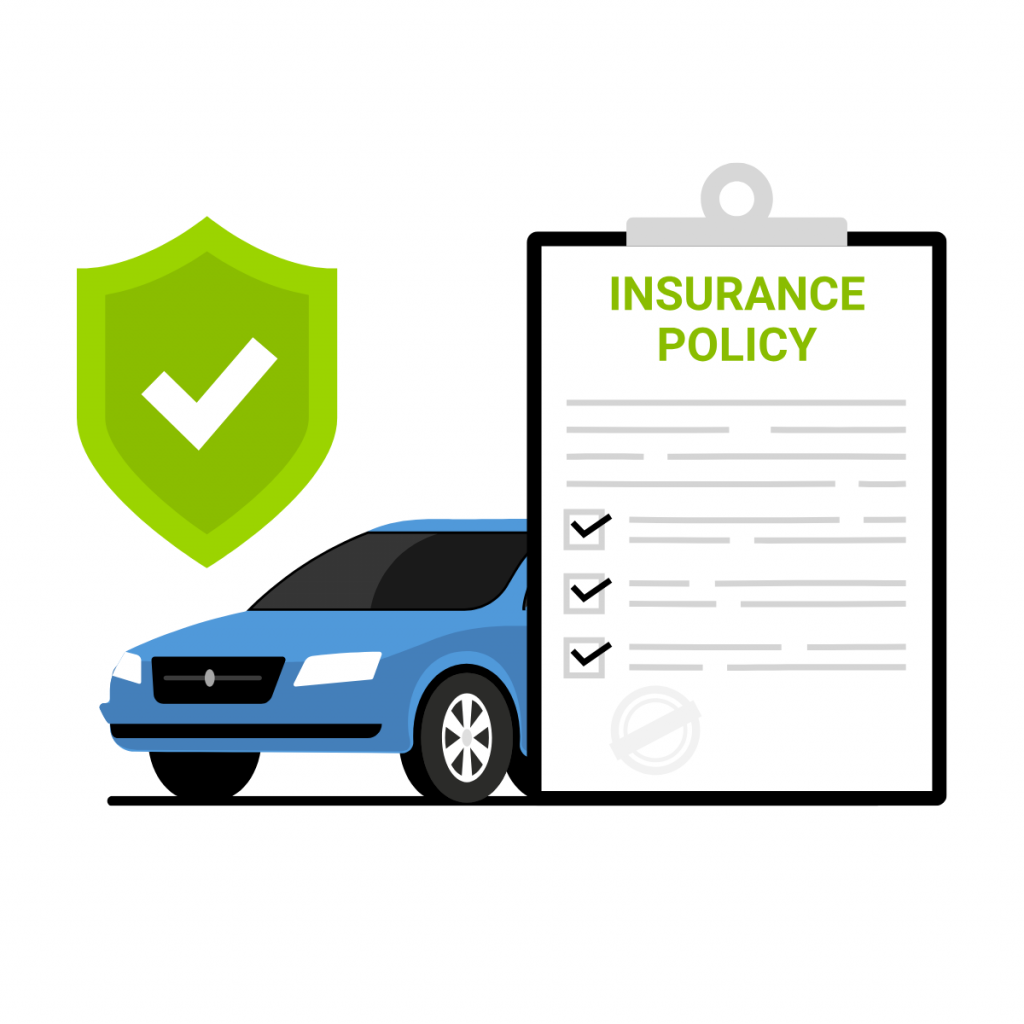Car insurance is a vital part of vehicle ownership, offering protection against financial loss due to accidents, theft, or other unforeseen events. When shopping for car insurance, understanding the different types of policies available is crucial to making an informed decision. Whether you’re a new driver or someone seeking to adjust your coverage, knowing the variety of car insurance options can help you choose the one that best suits your needs and budget. In this article, we’ll explore the most common types of car insurance policies, how they work, and their benefits, enabling you to make an educated choice for your vehicle’s protection.
What Are the Main Types of Car Insurance Policies?
Car insurance policies differ in coverage, cost, and the level of protection they offer. Here are the primary types of car insurance policies you should know about:

Liability-Only Car Insurance
Liability-only car insurance is the most basic type of car insurance and is often the minimum required by law in many states. This policy covers damages to others in the event that you are at fault in an accident. It typically consists of two key components: bodily injury liability and property damage liability.
- Bodily Injury Liability: Covers medical expenses, legal fees, and compensation for the injured party when you’re responsible for causing an accident.
- Property Damage Liability: Pays for the damage you cause to someone else’s vehicle or property, such as a fence, building, or sign.
Liability-only insurance is an affordable option for drivers of older cars or those who are looking for the most basic coverage to meet state legal requirements. However, it does not cover damages to your own vehicle or injuries to yourself in an accident.
Collision Insurance
Collision insurance helps cover the cost of repairs to your car if it’s damaged in a crash, regardless of who is at fault. Whether you’re involved in a minor fender-bender or a more severe accident, collision coverage pays for your vehicle’s repairs or replacement if it is totaled.
This type of policy is often recommended for newer cars or vehicles with higher value, as it provides protection against unexpected damages. Keep in mind that collision coverage typically comes with a deductible, which is the amount you must pay before the insurance kicks in.
Comprehensive Coverage
Comprehensive car insurance offers protection for damages not caused by a collision. This policy covers a wide range of non-collision events such as theft, vandalism, natural disasters (like floods or hail), falling objects, or animal collisions (such as hitting a deer).
Comprehensive coverage is optional but is highly recommended for anyone with a newer or more valuable vehicle. While it typically comes at a higher cost than liability or collision coverage, it provides a comprehensive safety net against various risks that could damage your car.
Personal Injury Protection (PIP)
Personal Injury Protection (PIP), also known as no-fault insurance, helps pay for medical expenses and lost wages resulting from an accident, regardless of who is at fault. PIP insurance covers the driver, passengers, and sometimes pedestrians who are injured in an accident.
In states with no-fault insurance laws, PIP is typically required. Even if you have health insurance, PIP can help cover additional medical costs, such as rehabilitation, that your health insurance might not fully pay for. PIP also covers non-medical expenses, such as child care and home help, if your injuries prevent you from performing daily tasks.
Uninsured/Underinsured Motorist Coverage
Uninsured/Underinsured Motorist Coverage (UM/UIM) protects you if you’re involved in an accident with a driver who doesn’t have insurance or doesn’t have enough coverage to pay for your damages. It can also help if the at-fault driver’s insurance policy is insufficient to cover all your medical bills and repair costs.
If you’re involved in an accident with an uninsured driver, UM/UIM coverage will pay for your vehicle repairs, medical bills, and even pain and suffering if the other driver is unable or unwilling to pay. This type of coverage is particularly important in areas with high rates of uninsured drivers.
Medical Payments Coverage (MedPay)
Medical Payments Coverage (MedPay) is similar to Personal Injury Protection (PIP), but it focuses solely on covering medical expenses for you and your passengers after an accident, regardless of fault. MedPay can help cover hospital bills, doctor visits, and other healthcare-related expenses.
Unlike PIP, MedPay does not cover lost wages or other non-medical costs. However, it’s often a more affordable option for drivers who want to ensure their medical expenses are covered after an accident, especially if they don’t have health insurance.
Full Coverage Insurance
Full coverage car insurance is a comprehensive policy that combines liability, collision, and comprehensive coverage into one package. This type of policy is designed to provide maximum protection for both your vehicle and others on the road.
Full coverage is typically recommended for drivers with newer or high-value vehicles. While it’s more expensive than basic liability insurance, it offers peace of mind knowing that you’re covered for nearly all types of accidents, damages, or theft. However, it’s important to note that full coverage does not guarantee coverage for every scenario, as some exclusions may apply, such as certain types of damage or losses.
Gap Insurance
Gap insurance is designed for drivers who owe more on their car loan than the vehicle is worth. If your car is totaled or stolen, gap insurance will cover the difference between what you owe on the loan and the actual cash value of the car, which may be lower due to depreciation.
This type of insurance is particularly useful for people who lease or finance their cars, as their loans may exceed the market value of the vehicle. Gap insurance ensures that you aren’t stuck paying off a loan for a car that’s no longer drivable or in your possession.
Pay-Per-Mile Insurance
Pay-Per-Mile insurance, also known as usage-based insurance, is a newer type of policy that charges drivers based on how much they drive. If you don’t drive frequently, this can be an affordable option. Pay-Per-Mile insurance uses a tracking device or mobile app to monitor the number of miles driven and calculates your premium accordingly.
This type of insurance is ideal for people who use their cars sparingly, such as those working from home or retirees who don’t drive often. However, it’s essential to keep track of your mileage and ensure that your insurance company’s tracking device is accurate.
Classic Car Insurance
Classic car insurance is designed for owners of vintage or collectible vehicles. These cars are typically more valuable than regular cars, and classic car insurance provides specialized coverage to protect them from damage or loss.
Classic car insurance often offers agreed-upon value coverage, meaning the insurer and the policyholder agree on a fixed value for the car in the event of a claim. This ensures that the car is covered for its true worth, rather than being subject to depreciation like regular vehicles.
How to Choose the Right Car Insurance Policy
Choosing the right car insurance policy depends on several factors, including your budget, driving habits, and the value of your vehicle. Here are a few tips to help you make the best decision:

Evaluate Your Coverage Needs
Consider your driving habits, the age and condition of your car, and whether you drive in high-risk areas. For instance, if you live in an area with high accident rates or weather-related risks, comprehensive or full coverage insurance may be worth considering.
Compare Multiple Quotes
Insurance premiums can vary significantly between providers, so it’s essential to shop around and compare quotes. Look for policies that provide the coverage you need at a price you can afford. Don’t forget to check the insurer’s reputation for customer service and claims handling.
Check Your State’s Requirements
Each state has its own minimum insurance requirements, so make sure your policy meets those requirements. While liability insurance is mandatory in most states, some areas may require additional coverage, such as PIP or UM/UIM.
Conclusion
Understanding the different types of car insurance policies is crucial to making the right choice for your needs. Whether you opt for liability-only coverage or comprehensive protection, each type of insurance offers distinct benefits and coverage limits. Take the time to assess your personal needs and driving habits, compare different options, and choose the best policy for your vehicle. With the right coverage, you can drive confidently, knowing that you’re protected in case of an accident, theft, or damage.

Leave a Reply